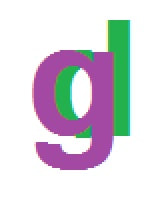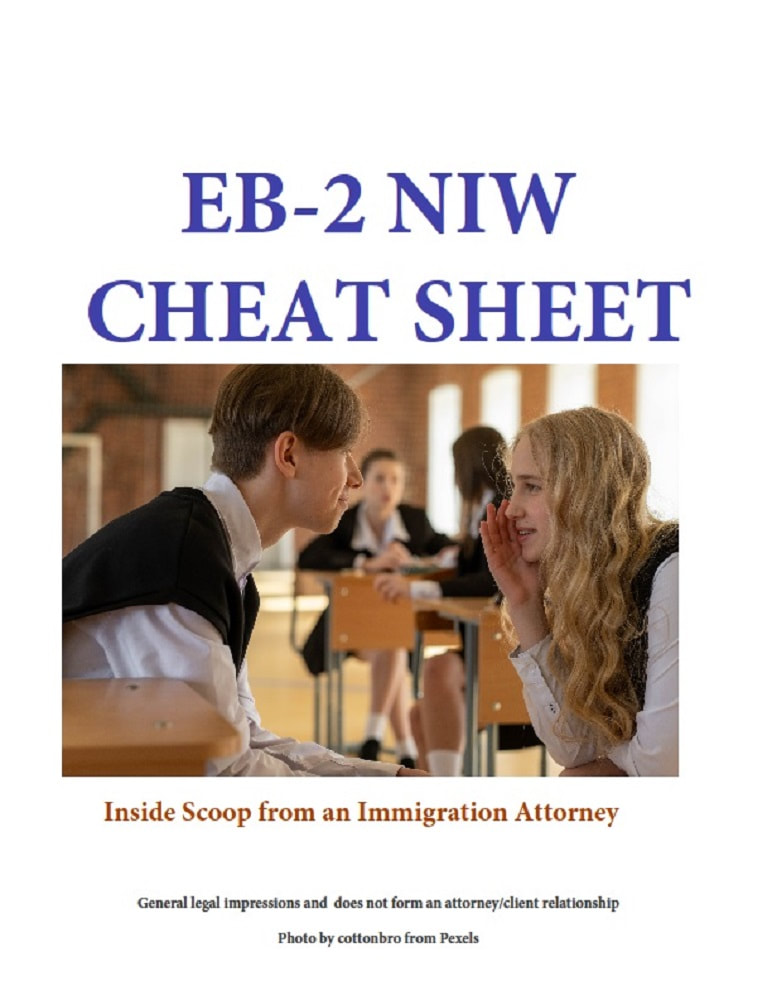 Imagine your excitement when you finally receive mail from the United States Citizenship and Naturalization Service (USCIS). Then think of how crestfallen you might feel when you find a Request for Evidence (RFE) letter inside the envelope. Receiving an RFE letter can be extra frustrating if you have already been waiting months for some sort of response from USCIS on your case. Nevertheless, responding to an RFE can be an opportunity to make sure that your petition is approvable by a USCIS officer. What’s an RFE? Foreign nationals who have never heard of an RFE should consider themselves lucky. If you “Ask Emma” about them on the USCIS website, here is what she will say: "A request for evidence (RFE) is made when an application or petition is lacking required documentation (initial evidence), or the officer needs more documentation (additional evidence) to determine an applicant's eligibility for the benefit sought. We may send you a request for evidence at any stage of our review. The request will indicate what evidence or information is needed for us to fully evaluate your application or petition. The notice will explain where to send the evidence and will give the deadline for your response. Your application or petition will be held in suspense during that time. If you receive a request for evidence and have questions about what you need to submit, you may call our USCIS Contact Center at 1-800-375-5283." So, basically, an RFE is the Department of Homeland Security’s way of making sure that they have everything they need to approve a case. However, sometimes, an RFE can be a stall tactic on the part of USCIS. REQUEST FOR EVIDENCE DURING PREMIUM PROCESSING Certain immigration petitions and applications, such as for the EB-1A extraordinary ability green card and the E-2 treaty investor nonimmigrant visa allow applicants to submit Form I-907 to request premium processing. Paying an additional $2,500 for premium processing means that a USCIS officer must “act” on the case within 15 calendar days. However, frequently this speedy processing means the issuance of an RFE, or worse, a Notice of Intent to Deny (NOID). The bright side is that beneficiaries of more complex cases, such as the EB-1A or the E-2, can treat the initial application sort of like a practice exam. They can use the RFE letter as a form of cheat sheet to see exactly what they must do to “pass” the test by getting an approval. GETTING AN RFE AFTER YOU FILED THE CASE YOURSELF Some noncitizens prefer to petition for an EB-1A, an EB-2 NIW, or an E-2 themselves in order to save money. But, as a colleague once quipped, “Just because I can put a new transmission in my car myself doesn’t mean that I will feel safe driving it afterwards.” There is a reason that people get surgery from people who went to medical school and highlights from licensed beauty professionals. To do otherwise can mean disaster. If you tried to file your immigration case yourself and received a NOID or RFE from USCIS, you can still save your case. Many immigration law firms near you are willing to take you on as a client and respond to your RFE. Bona Fide Enterprise for E-2 Visa Purposes
Even if you come from a qualifying treaty country and have substantial, investable capital, your USCIS E-2 visa application could be denied if it fails to establish that the proposed or existing business is a bona fide enterprise. As such, an E-2 visa applicant should submit supplemental evidence that the enterprise meets E-2 visa criteria. The USCIS E-2 visa standards require that the enterprise is a real, active, and operating commercial or entrepreneurial venture that produces goods or services for profit. To demonstrate that the investor has the requisite commitment to the enterprise, the E-2 visa applicant might provide USCIS with a detailed description of the activities of the business, as well as financial statements and business reports. Other examples of evidence that may prove to USCIS that the proposed or existing enterprise qualifies as a bona fide venture include the following:
The USCIS requires that an E-2 visa applications be for a bona fide venture in the USA, and not a marginal enterprise. As such, it can be important for you provide them with sufficient documentation to demonstrate that the enterprise is bona fide. A marginal enterprise, as defined by the USCIS, is one that does not have the current or potential capacity to generate more than enough income for the treaty investor and their E-2 visa dependents. A persuasive E-2 visa application should demonstrate that the treaty investor’s income will be more than sufficient for at least five years from the date of the E-2 visa classification. The USCIS could deny an E-2 visa application if it determines that the proposed or existing enterprise is derived from relatively small capital and is intended only to provide a living for the investor and their E-2 dependents. One method of fortifying an E-2 application is by submitting a detailed business plan or executive summary. Additional documentation that may convince the USCIS that a treaty investor business is bona fide, rather than marginal, includes following:
 When you are applying for an employment-based green card, you need to provide the United States Citizenship and Immigration Service (USCIS) with a great deal of supporting evidence. One type of document that generally accompanies an immigration petition of this type is the letter of recommendation. Foreign nationals who are applying for an EB-1A extraordinary ability or EB-2 national interest waiver green card are often professionals whose potential recommenders have busy jobs and lives. Therefore, an EB-1A or EB-2 NIW beneficiary may be asked to write their own recommendation letters and then present them to their recommender for signature. If you are already paying an immigration lawyer near you to draft your EB-1A or EB-2 NIW petition letter, you might not want to pay extra for them to write letters for your recommenders to put on letterhead and sign. But if your only other option is to write the recommendation letters yourself, how do you do that? This article provides some information on the key parts of a strong letter of recommendation. Parts of an EB-1A or EB-2 NIW Letter of Recommendation A persuasive letter of recommendation for an EB-1A extraordinary ability or EB-2 national interest waiver green card petition should have several key items. Introduction of the Recommender The first paragraph of a EB-1A extraordinary ability or EB-2 national interest waiver recommendation should state the name of the green card applicant and the reason for the letter. Then in that same paragraph, or in the second one, there should be a listing of the qualifications of the recommender. Some relevant information that can be included in the introduction of the recommender are their title, workplace, educational background, and notable accomplishments. These key facts can be useful in persuading a USCIS officer that what is written about the EB-1A extraordinary ability or EB-2 national interest waiver candidate carries some weight. Subsequent Paragraphs Should Relate to the Purpose of the Letter After the recommender is introduced in a letter about an EB-1A extraordinary ability or EB-2 national interest waiver candidate, the next paragraphs should relate to the green card beneficiary’s accomplishments. The letter can include any, or most, of an employment-based green card applicants notable achievements, including their research and citations, original contributions, and awards. If the EB-1A extraordinary ability or EB-2 NIW applicant wants their recommender to describe their leading and critical role in an organization, there is a particular way that these achievements should be written. First, the company should be shown to be notable, such as through its large revenue, awards, or humanitarian efforts. Then, the list of accomplishments of the green card applicant should be specific and measurable, including dollar amounts and percentages. Lastly, they should be shown to have benefitted the organization as a whole. Closing the Letter The final paragraph of a letter of recommendation for an EB-1A extraordinary ability or EB-2 NIW candidate should state that the person is highly deserving of a green card. It should also tell the USCIS adjudicator that the applicant stands out among their peers and will greatly benefit the United States if a green card is approved. When the recommender signs the letter, they should include their title and contact information. Finally, it should be printed on company or university letterhead. Ask for a Sample from an Immigration Attorney Some immigration law firms are willing to provide a sample of a letter of recommendation to a foreign national. This can be helpful if you decide to draft a letter of recommendation by yourself so that it can be presented to someone for signature.  For a second-preference, employment-based green card, as indicated at Part 2, line 1h on the Form I-140, Petition for Alien Worker, to qualify for a national interest waiver (NIW) you must be someone who is a member of the profession holding an advanced degree or has exceptional ability. As you do not necessarily have to have a graduate degree or a Ph.D, because you can demonstrate for the United States Citizenship and Immigration Service (USCIS) that you have remarkable attributes that should warrant the grant of an EB-2 NIW green card. Notably, if you have both an advanced degree and exceptional ability, a USCIS adjudicator might be even more apt to approve your I-140 NIW petition. As the EB-2 NIW applicant does not have to have a job offer nor a labor certification, many immigration lawyers who are experienced with this type of green card generally encourage applicants to provide USCIS with as much evidence as possible to show that they are deserving of a national interest waiver. Evidence of Educational Credentials EB-2 NIW applicants can supply more than one form of documentation to evidence their educational credentials before USCIS. Evidence of Advanced Degree As stated on the USCIS webpage on the National Interest Waiver, you need to provide “an official academic record,” such as a diploma or a university transcript. If the advanced degree was earned at a foreign college, it can be prudent to obtain a foreign credential evaluation, so that it is clear to USCIS that the education is indeed postgraduate. For example, the master’s degree awarded by some foreign universities would be a bachelor’s degree in the United States. Although USCIS asks for the official academic record that shows the advanced degree for those who have one, many immigration attorneys like to attach documents for both the graduate and the undergraduate degrees. Proof of Undergraduate Degree Plus Experience Persons who have a U.S. bachelor’s degree, or foreign equivalent, can provide their diploma or transcript to USCIS, along with letters from current and former employers that show at least five years of progressive work experience in the field after earning the undergraduate diploma. Ideally, these letters should be printed on letterhead, written by someone in authority at the organization, and provide the foreign national’s title, dates of work, and job description. Having more than five years in the profession, and preferably ten years in the field, can also help to convince USCIS that a foreign national applicant has exceptional ability in the career, as well. Although the USCIS policy states that one can have either an advanced degree or exceptional ability, generally it helps to have both, since the Service will be waiving the requirement of a job offer and labor certification. Proving Exceptional Ability It is of note that, unlike the EB-1A extraordinary ability green card, with the EB-2 NIW, the regulations only ask for exceptional ability. So what is the difference? USCIS, as it states on the National Interest Waiver webpage, defines exceptional ability as “a degree of expertise significantly above that ordinarily encountered in the sciences, arts, or business.” Some immigration attorneys may describe this “degree of expertise” in an introductory paragraph on the EB-2 NIW applicant’s background. Others show this remarkable proficiency in the section of the petition letter that shows that they are well positioned to advance their proposed endeavor in the United States.  For many foreign national professionals who want to live and work permanently in the United States, the prospect of a National Interest Waiver (NIW) green card is appealing. This is because you do not need to have a job offer nor a labor certification to qualify. One of the factors that the United States Citizenship and Immigration Service (USCIS) considers when deciding whether or not to grant a noncitizen an EB-2 NIW green card is substantial merit. You might be wondering what the term “substantial merit” actually means, as seems to be an ambiguous concept. In this article an EB-2 NIW attorney in the United States explains more about this criterion for lawful permanent residency in this immigration category. Substantial Merit According to Matter of Dhanasar In 2016, the AAO court case, Matter of Dhanasar, provided a three-prong test to determine whether a foreign national might qualify for a second-preference, employment-based green card based on a National Interest Waiver. The three criteria in the test are (1) The proposed endeavor has both substantial merit and national importance; (2) The Beneficiary is well positioned to advance the proposed endeavor; and (3) On balance, it would be beneficial to the United States to waive the job offer and labor certification requirements. According to Dhanasar, substantial merit may be demonstrated “in a range of areas such as business, entrepreneurialism, science, technology, culture, health, or education [. . .] Endeavors related to research, pure science, and the furtherance of human knowledge may qualify […]” Dhanasar, 26 I & N Dec. 884, 889. This standard indicated in the case allows for broad latitude in establishing substantial merit, as it suggests a variety of career areas as well as a range of endeavors. Substantial Merit as Helping Humans One method for establishing substantial merit for the purposes of an EB-2 NIW petition is to illustrate how the foreign national’s work benefits the public. Have they conducted medical research, created jobs, made life easier, or taught the public new concepts? Or perhaps an EB-2 NIW applicant might be entertaining audiences in a novel way or is raising the standards in their field through their accomplishments. For a USCIS adjudicator to find that a foreign national’s endeavors have substantial merit, their work does not necessarily have a global impact. Generally, it just needs to have a great deal of virtue. Knowing Substantial Merit When You See It In the 1964 court case, Jacobellis v. Ohio, the suggestion regarding the definition of obscenity was “I know it when I see it.” Although the concept of substantial merit is at the opposite end of the spectrum, you could likely say that you can recognize it when you observe it, as well.  The USCIS issues more than 360,000 F1 visas to scholars who wish to study in the United States. Many foreign nationals need extra funds to sustain themselves while earning a degree at an American university. If you are studying at a U.S. university on an F1 visa, or you plan to, you may be wondering how to make money when you are not in class. Actually, there are several ways that you can earn a living while in you are in America on an F1 visa. You can also find a way to continue working in the United States after you graduate. Types of employment on an F1 visa There is more than one way to work legally in the United States on an F1 visa. Some prefer to find campus jobs, while others prefer to acquire practical training that they can use in their careers. Curricular Practical Training (CPT) F1 students who need an internship or other form of cooperative education to complete their educational program might consider Curricular Practical Training, or CPT. Within this program, students on an F1 visa can gain work experience within their field of study, so long as it is required by their U.S. university. To be eligible for CPT, foreign students must have been enrolled in school full-time for at least one year in the United States on an F1 visa. Additionally, the student needs to have obtained a job offer related to their academic program before they even apply for a curricular practical training authorization. F1 visa students who are choosing to work through Curricular Practical Training can only work with approved companies that are on the Student and Exchange Visitor Information System (SEVIS) and the Form I-20 list. Therefore, students who want to work outside their major, or for a company that is not approved, should choose another option besides CPT. Working on campus Foreign national students who are not interested in an internship, or are too early in their academic program, might want to get a campus job. Foreign students can make some pocket money by working on campus, as long as they meet certain conditions. In order to maintain F1 status while working in a campus job, foreign university students must meet the following criteria:
Optional Practical Training (OPT) After graduating from an American university program, a foreign national may want to extend their F1 visa a little while longer. Optional Practical Training (OPT) is a bit like Curricular Practical Training (CPT), but there are some differences. Unlike CPT, with OPT the F1 visa holder can complete it either before or after graduation. However, like CPT, the F1 student should have been enrolled in the university for at least one year. Although OPT and CPT jobs should be in the foreign national’s field of study, with OPT the job does not need to be with an approved company from a list STEM-OPT Extension F1 visa holders who have been studying science, technology, engineering, or math may want to consider applying for STEM-OPT. This will allow the foreign national student to explore paid training within their STEM field of study for an additional 24 months beyond their Optional Practical Training. The STEM-OPT Extension is available to foreign students who obtained a bachelors, masters, or doctoral degree in a STEM major from an American university that is approved by the Student and Exchange Visitor Program (SVEP). Even if a student is currently working on an OPT in a non-STEM major, they may be able to get a STEM-OPT extension based on a prior STEM degree from an approved U.S. university. Working outside the university Students who are in the United States on an F1 visa may work away from their college campus in limited circumstances. Those who can show the United States Citizenship and Naturalization Service (USCIS) that they have a “severe economic hardship” may be able to have a part-time position off campus. This type of qualifying hardship must be beyond the control of the student. Thus, money pressures like unexpected medical bills, loss of financial aid, or a sudden tuition and housing increase may make a student eligible to work away from campus. To be allowed to work off campus after experiencing sudden, unexpected financial difficulties, the student must also have been studying with this F1 visa status for one year and must be unable to get a job on campus to relieve their financial stress. Working with an international organization Students who are interested in global studies might find it appealing to work for an international organization. This can be an option for some F1 visa scholars. Like many of the other work options, the job should be in the student’s field of study, and the organization must be listed as eligible for F1 visa students. Examples of qualifying international organizations include:
Spouses and children of F1 visa students Foreign national students who are married and/or have children may wish to have more than one income to support their household. Unfortunately, the spouse of an F1 visa holder can arrive in the United States on an F2 visa, but they cannot legally work in the United States. One option for the spouse of an F1 visa holder is to get an F1 visa themselves and explore some of the authorized work options afforded by this visa. |
Photos from shixart1985 (CC BY 2.0), themostinept, Cold, Indrid, Alexandre Dulaunoy, radkuch.13, Phillip Pessar, SchuminWeb, themostinept, EpicTop10.com, wuestenigel, DonkeyHotey, wwarby, hile, PEO, Assembled Chemical Weapons Alternatives, Aidan Jones, oliff11, Michael C. Rael, Unique Randomness, wuestenigel, Jonathan Rolande, wuestenigel, shixart1985, byzantiumbooks





 RSS Feed
RSS Feed




